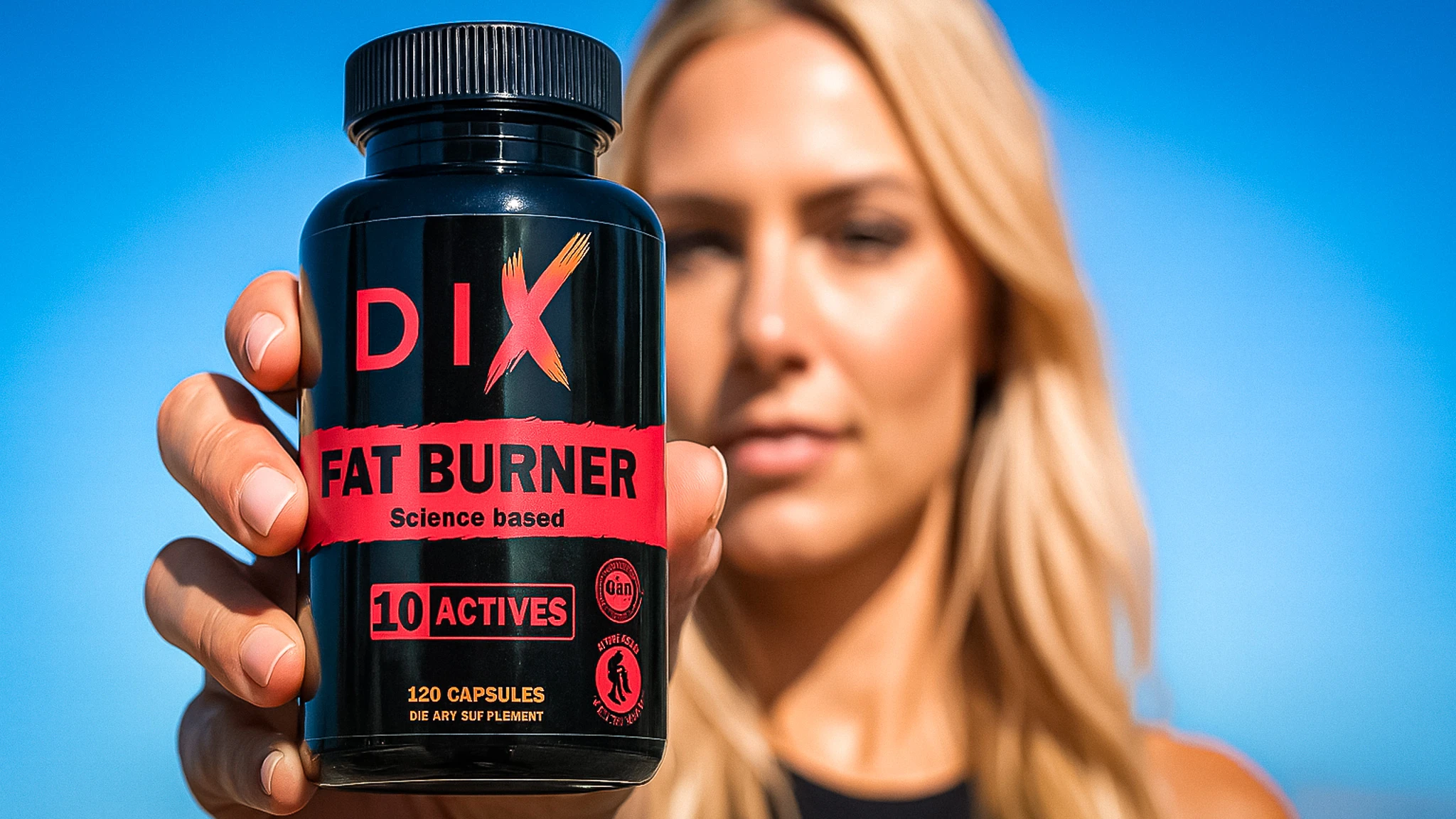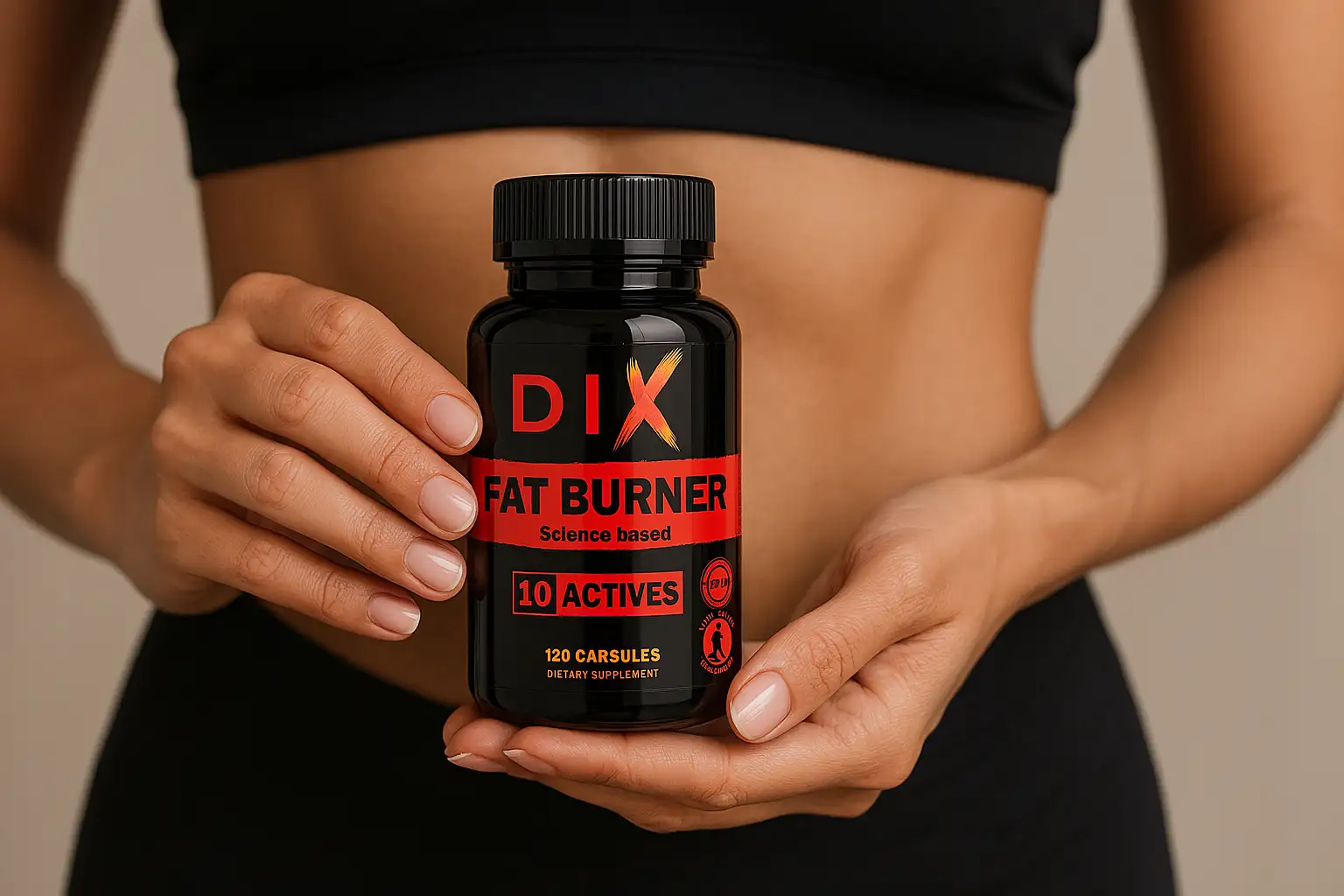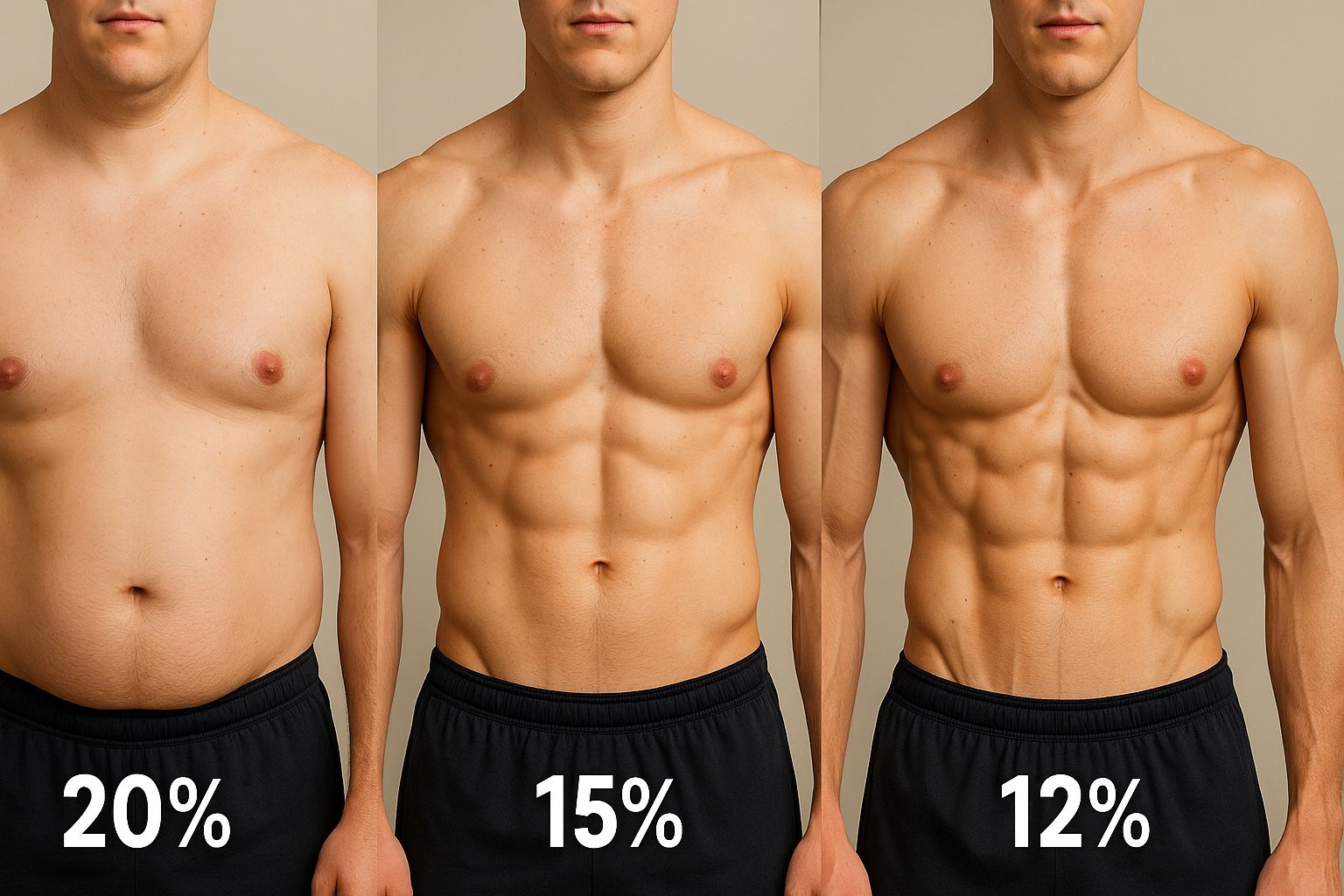Cutting in bodybuilding: discipline and adaptation
Getting lean in bodybuilding is the ultimate goal for many, but who is willing to pay the price? With constant hunger, dwindling energy, sleepless nights, and drops in testosterone, cutting isn’t just a simple diet: it’s a total challenge that tests your discipline.
Discover how to master the three key pillars – precise nutrition, training that preserves your muscle mass, and a steely mindset – to reach your goal of 10% body fat without compromising your health.
Ready to take on the final boss with tried-and-tested strategies and personalised tweaks?
Are you ready for a muscle cut?
Cutting is a demanding physical and mental challenge. Assess your readiness before diving in to maximize your chances of success.
Your readiness level
Complete the questionnaire to find out if you're ready to start a cutting phase.
- The cutting phase aims to lose fat without sacrificing muscle. Unlike a traditional diet, the goal is to reduce body fat while preserving muscle mass through a controlled calorie deficit and a precise distribution of macronutrients.
- A challenging journey both hormonally and mentally A decrease in testosterone and leptin, an increase in cortisol, constant hunger, fatigue, and low energy make cutting both physically and mentally demanding.
- Nutrition and protein as cornerstones A moderate deficit of 300 to 500 kcal, a protein intake of 1.8 to 2.5 g/kg, and complex carbohydrates tailored to physical activity help to maintain muscle mass and reduce fatigue.
- Intelligently Combining Strength Training and Cardio Moderate to heavy weights (6 to 12 repetitions) promote muscle retention, while HIIT is more effective than slow cardio, provided you keep it within limits to avoid overtraining.
- Useful but non-essential supplements Powdered proteins, creatine, and natural fat burners (green tea, berberine, cayenne pepper) can support performance and energy expenditure, but they do not replace a rigorous nutrition and training strategy.
Cutting in bodybuilding: much more than just losing weight
What is a cutting phase and how is it different from a diet?
As we highlight in the video, getting lean in bodybuilding is akin to facing a "final boss": a coveted yet demanding goal. Cutting in bodybuilding goes far beyond just losing weight. Its primary aim is to reduce body fat while maintaining muscle mass acquired with such effort.
Unlike a traditional diet, this approach specifically targets excess fat without sacrificing muscle. To achieve this, it relies on a calculated caloric deficit and a precise distribution of macronutrients. (high protein, controlled carbohydrates, essential fats) and a tailored workout.
The typical goal is a body fat percentage of 10%, for visible muscle definition.
Without this approach, a traditional weight loss method may lead to muscle loss, dulling the hard-earned results.
A straightforward goal, a challenging execution
On paper, the principle seems straightforward: create a calorie deficit by consuming less than your daily expenditure. However, the reality is much more intricate. It's important to understand that during a cutting phase, your body goes into survival mode, triggering biological mechanisms that complicate the process.
The drop in muscle glycogen reduces water retention, which explains those frequent trips to the loo. Hormonal changes see testosterone and leptin levels fall, while cortisol rises, impacting mood, recovery, and sleep. Hunger becomes a daily struggle, especially when trying to resist the temptations of snacks and drinks – it’s a real challenge, isn’t it? 😅
Without forgetting the drop in energy, where even putting away your shopping feels like a physical challenge. These hurdles require unwavering discipline, meticulous tracking of your intake, and a mental preparation to handle frustration and cravings for relapse.
The cutting phase is not just a mathematical equation: it's a battle that is both scientific and psychological.
Achieving a successful cut starts with mastering your nutrition.
Calculating your calorie deficit: the essential starting point
To start a cutting phase, you need to a calorie deficit is essentialTo achieve this, you need to consume fewer calories than your body burns. And yes, cutting starts not in the gym but in the kitchen. A moderate deficit of 10-20% below your daily energy expenditure (DEE) is optimal. To accurately determine your needs, our basal metabolic rate calculator is an excellent starting point.
This gradual approach (300 to 500 kcal fewer) minimise the risk of muscle loss and metabolic adaptations. This is where you need to start learning how your body works, as an overly aggressive deficit could lead to a slowed metabolism, extreme fatigue, or muscle loss. Your body will signal you, so keep an eye out for signs like decreased strength or irritability to adjust your plan accordingly. A simple and practical example is that a 10% drop in your performance during your sets could indicate the need to slightly increase your intake. This highlights the importance of tracking both your calories and your performance to stay objective and avoid falling into confirmation bias.
What foods should you prioritise for cutting?
Proteins are your best allies for maintaining muscle massA recommended intake of 1.8 to 2.5g per kilogram of body weight is advised. Similarly, we have developed a comprehensive protein needs calculator, fully comprehensive, to support you. These proteins should be distributed across several meals, with a focus on post-workout meals and breakfast.
The ideal sources include:
- lean meats (chicken, turkey)
- oily fish (salmon, mackerel)
- low-fat dairy products (0% fat fromage blanc, skyr)
- and of course, the amazing Egg.
For carbohydrates, tailor your intake to your activity : between 2g/kg/day for beginners and up to 5g/kg/day for elite athletes. Complex carbohydrates (oat flakes, sweet potatoes, quinoa) are preferable to quick sugars.
A handy tip for identifying good and bad carbohydrates: the whiter the carbs, the less likely they are to be complex!
Lipids should make up 20-35% of your intake to maintain hormonal balance. Ideal sources include the oméga-3 (salmon, nuts) and monounsaturated fatty acids (avocado, olive oil).
Foods other than protein to prioritise and those to avoid
- To prioritise Legumes (lentils, chickpeas), green vegetables (broccoli, spinach), sweet potatoes, oats, and red fruits (blueberries, raspberries).
- To limit Ultra-processed products, bread, fizzy drinks, sweets, fried foods, pastries, alcohol. To understand in detail how alcohol affects your muscle gains, our dedicated article will shed light on the topic.
Protein and fibre-rich foods enhance feelings of fullness (This will help you feel less fatigued by the end of the day)Unlimited vegetables provide essential vitamins and minerals. Opt for healthy snacks like almonds instead of chocolate bars. Lastly, drinking 2.5 to 3 liters of water a day will help curb your hunger and keep you hydrated.
Training During Cutting Phase: How to Preserve Your Muscle Mass
Building muscle... Essential for maintaining your strength.
In a cutting phase, Strength training remains your best ally in maintaining your muscle mass.Yes, it might sound silly to say, but it's essential.
However, the question that often arises is whether we should do short and heavy sets or long and light ones...
Studies show that sets of 6 to 12 repetitions with moderate to heavy weights are the most effective.
Remember that muscle building is all about repairing the damage done to your muscles during training. The best way to maintain muscle is to keep building it.
Once again, for optimization, it's crucial to know your maximum loads and understand what percentage of your max weight you can work with. For this, we can only encourage you to use our [[TIA_...]] 1-RM Calculator can help you fine-tune your workout loads. This tool adjusts your intensities based on your current strength, avoiding any unnecessary loss.
Cardio: a tool to use wisely
Cardio isn't the enemy, but it should be used in moderation. A HIIT (High-Intensity Interval Training) session burns around 200 calories during the workout and triggers EPOC, extending calorie burn even after you've finished exercising. This prolonged effect boosts fat burning. over several hours. In contrast, LISS (low-intensity steady state cardio) takes longer to achieve lesser results, with an increased risk of muscle degradation.
Keep your sessions to 2 to 4 per week. Caution: exceeding this frequency raises cortisol levels., a hormone that weakens your muscles. A chronic elevation of this hormonal marker lowers your basal metabolism and promotes muscle loss, counterproductive to your goal.
To illustrate, a study has shown that three weekly HIIT sessions outperform 5 sessions of steady-state cardio for fat loss, while safeguarding your muscle gains. HIIT after a weight training session is perfect, but make sure to schedule rest days to prevent overtraining.

How to manage your cutting phase mentally?
We often think of cutting in terms of physical appearance, but we tend to overlook the importance of mental strength during a cut.
The hormonal impacts and their effects on your well-being
Behind these physical sensations lie significant hormonal upheavals. Your testosterone, a key ally in muscle gains, gradually declines, impacting your energy and libido. At the same time, leptin – the satiety hormone – decreases, while ghrelin – the hunger hormone – skyrockets. The result: a cycle of cravings and lack of motivation.
Cortisol levels rise with the stress of dieting. This hormone hinders muscle recovery, disrupts sleep, and increases fatigue. On top of that, the increased urination linked to glycogen breakdown (each gram of stored glycogen releases 3 to 4 grams of water) explains why cutting can feel like a real challenge. mental marathon as much as a physical challenge.
Managing your cut and social interactions
Staying lean requires a constant reassessment of your social habits. Turning down drinks, friendly meals, or even a sweet coffee demands sharp discipline. Your meal planning becomes an obsession: weighing food, preparing bland meals, and steering clear of temptations. This mental burden is exhausting, especially as your mood can deteriorate with lower glucose levels.
However, the worst enemy remains self-demand. Striving for perfection in your diet, recovery, and training creates constant pressure. On some days, mental fatigue can make you irritable, as if every little decision of the day becomes overwhelming. But remember: Being lean is an aesthetic triumph, but not necessarily a permanent state of grace. Embrace these compromises to move forward without burning out..
Planning your cut and adjusting your approach: a marathon, not a sprint
How long does a cutting phase last in bodybuilding?
A successful cutting phase lasts between 8 to 12 weeks. for most practitioners. This duration varies depending on your metabolism, body type, and goals. A beginner will typically stick to 8 to 10 weeks, while an experienced practitioner can extend this to 16 weeks with strict monitoring. Muscle fibres also play a role in the duration: endurance enthusiasts (slow-twitch fibres) tend to handle long cutting phases better than strength athletes (fast fibres).
The ideal loss is [[TIA_...]] 0.5 to 1% of your weight per week to maintain muscle mass. A drastic deficit can slow down your metabolism and impair your performance. A beginner can start with a deficit of 500 kcal per day and consume 2 to 4 g of complex carbohydrates per kg of body weight to stabilise energy levels.
How can you reliably measure your progress?
Combine the following indicators :
- The scalesWeigh yourself regularly in the morning before eating and calculate a weekly average. Relying on weight alone can be misleading due to hydration fluctuations.
- MeasurementsThe waist measurement tracks visceral fat loss. Include hips, thighs, and arms for greater accuracy.
- The skinfold caliperMeasure the tricep, subscapular, and abdominal skinfolds if you are familiar with the technique. This tool remains one of the most reliable for estimating body fat percentage.
- The photos and the mirrorTake front, side, and back photos every two weeks. Muscle definition, especially in the abs, is a tangible sign of success.
Knowing when and how to adjust your plan if you hit a plateau
A A plateau occurs when weight and measurements stagnate. for 2 weeks despite strict monitoring. Here are the possible adjustments:
| Scenario | Action on Nutrition | Training Action |
|---|---|---|
| Weight plateau, decent energy | Reduce carbohydrates by 20-30g per day. | Add 20-30 minutes of cardio |
| Weight stagnation, fatigue, decline in performance | Weekly refeed (carbs at maintenance) | Maintain or slightly reduce volume |
| Rapid weight loss (>1.5% per week) | Increase carbohydrates or fats | Avoid adding cardio |
A plateau is an opportunity to refine your approach. The weekly refeed (a temporary increase in carbohydrates) can kickstart your metabolism if you're feeling fatigued. If your weight is plateauing, gradually reduce your intake. Advice: The patience and gradual adjustments are your best allies. A cut is a balance between science and listening to your body.

Dietary supplements: your allies for an optimized cut
The essentials to support your efforts
During a cutting phase, well-chosen dietary supplements become essential allies. Protein powders (Whey, Casein) form the foundation of any serious strategy. They provide sufficient intake to maintain muscle mass while also delivering a satisfying feeling of fullness.
Creatine, often linked to strength training, reveals its entire value in a calorie deficit. Elle aide à maintenir votre niveau de performance et protège contre le catabolisme musculaire. Sa rétention d’eau intracellulaire améliore aussi la définition musculaire.
A natural fat burner, containing berberine, green tea, or even cayenne pepper, can also support energy expenditure. These plant-based ingredients promote thermogenesis, boost metabolism, and help mobilise fats as an energy source, all while maintaining a respectful approach to the body.
Every element fits into a broader strategy. None of them can replace a strict diet or quality training. However, when used wisely, they ease the transition through the demanding cutting phase, while preserving your health and performance.
Are you ready to take on the cutting challenge?
Cutting is not a punishment, but a workout for both body and mindEmbrace fatigue and rediscover simple foods like pan-fried fish. Set yourself a realistic goal: what percentage of body fat are you aiming for? Share it in the comments!
The cut demands science, discipline, and mindsetPreserve your muscle mass through targeted nutrition and tailored training for sculpt your physique and disciplineEvery step requires balance, but the results – Sculpted body, confidence – worth the effortReady? Transform every barrier to success.
Caloric deficit and rate of weight loss
- Impact of two different rates of weight loss on body composition and strength (Slow weight loss of around 0.7% per week better preserves lean mass compared to a rapid loss of 1.4% per week) DOI: DOI
Proteins and Muscle Preservation
- Consuming higher levels of dietary protein compared to lower amounts during an energy deficit, alongside intense exercise, leads to a more significant increase in lean muscle mass. High protein intake during a deficit promotes the preservation and even gain of lean muscle mass. DOI: DOI
- A systematic review, meta-analysis, and meta-regression of the impact of protein supplementation on gains from resistance training. (Beyond 1.6 g/kg/day, the benefits for hypertrophy plateau under normal conditions) DOI: DOI
Carbohydrates, fats, and hormones
- Low-fat diets and testosterone levels in men: A systematic review and meta-analysis (Very low-fat diets reduce circulating testosterone) DOI: DOI
- Nutritional strategies to optimise muscle mass gain in resistance-trained athletes (Carbohydrates essential for performance, fats crucial for hormonal balance) DOI: DOI
Cardio, HIIT and Interference
- Concurrent training: a meta-analysis exploring the interference between aerobic and resistance exercises (Cardio can limit strength if done too often, especially running) DOI: DOI
- Effects of high-intensity interval training versus moderate-intensity continuous training on body fat (HIIT as effective as steady-state cardio, but more time-efficient) DOI: DOI




